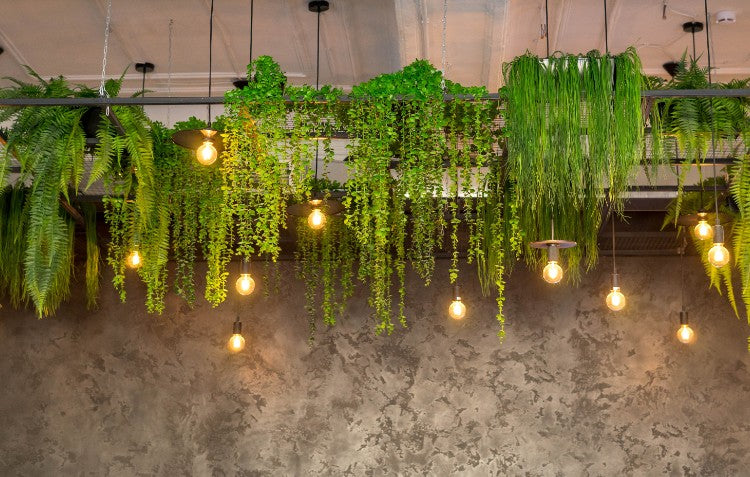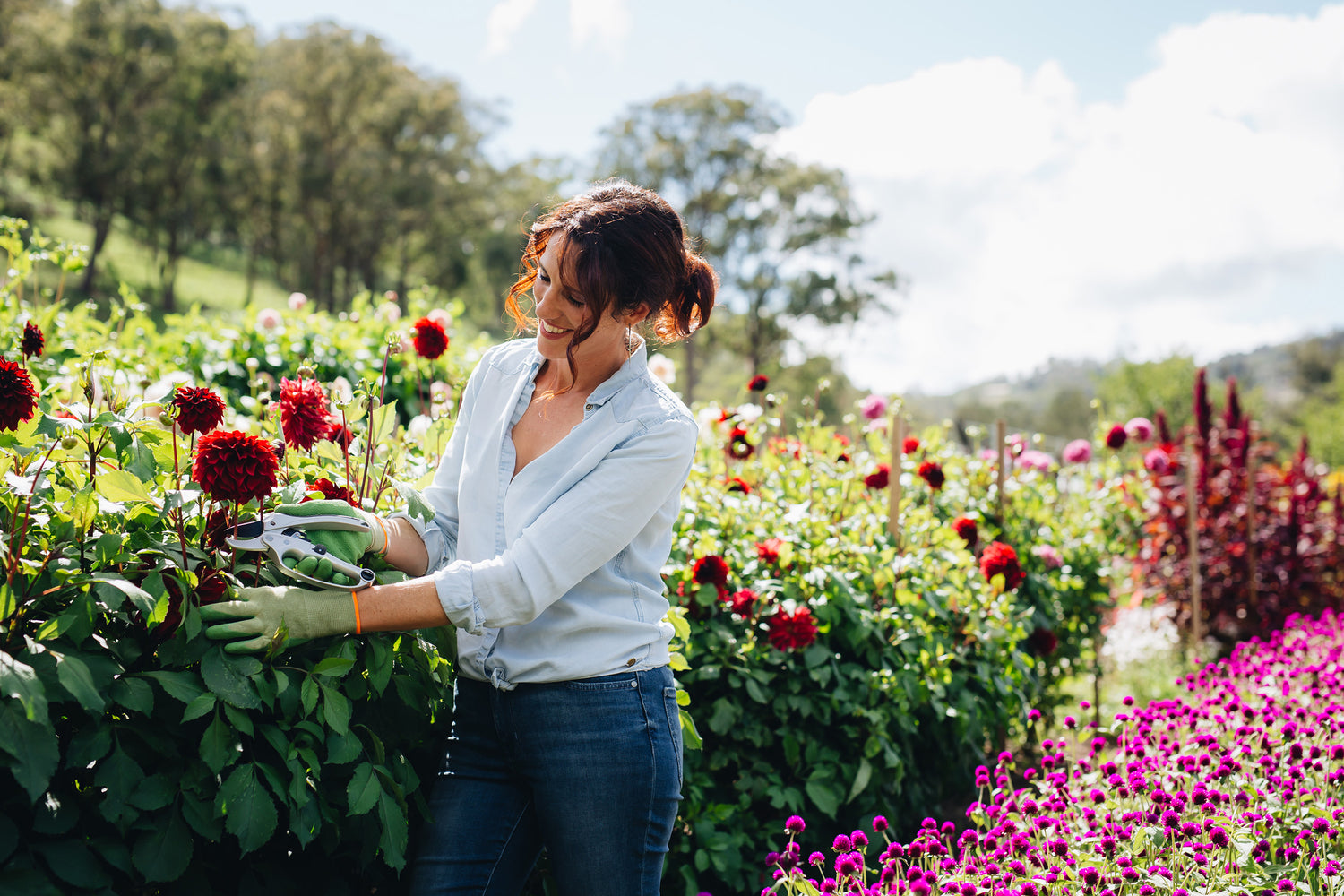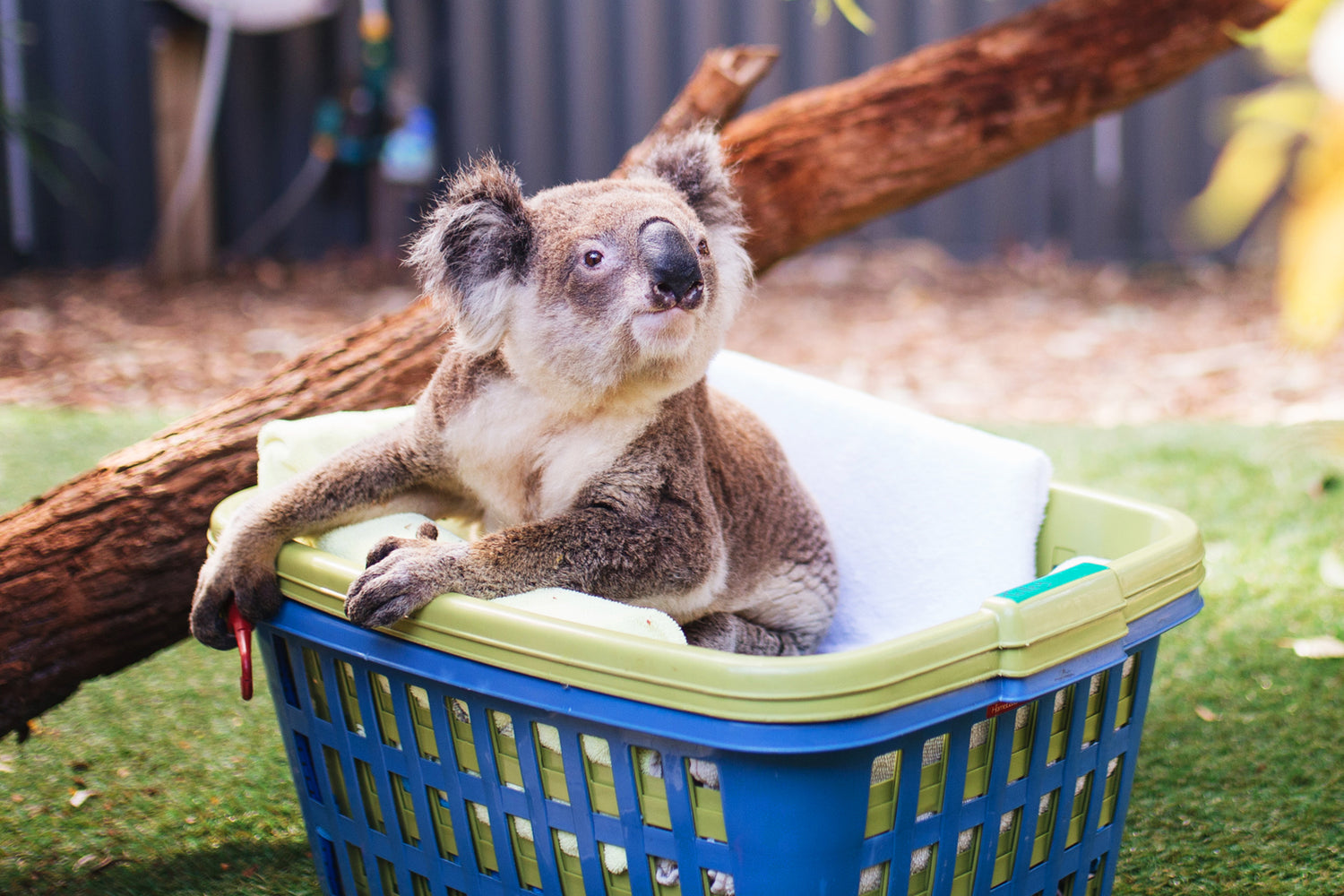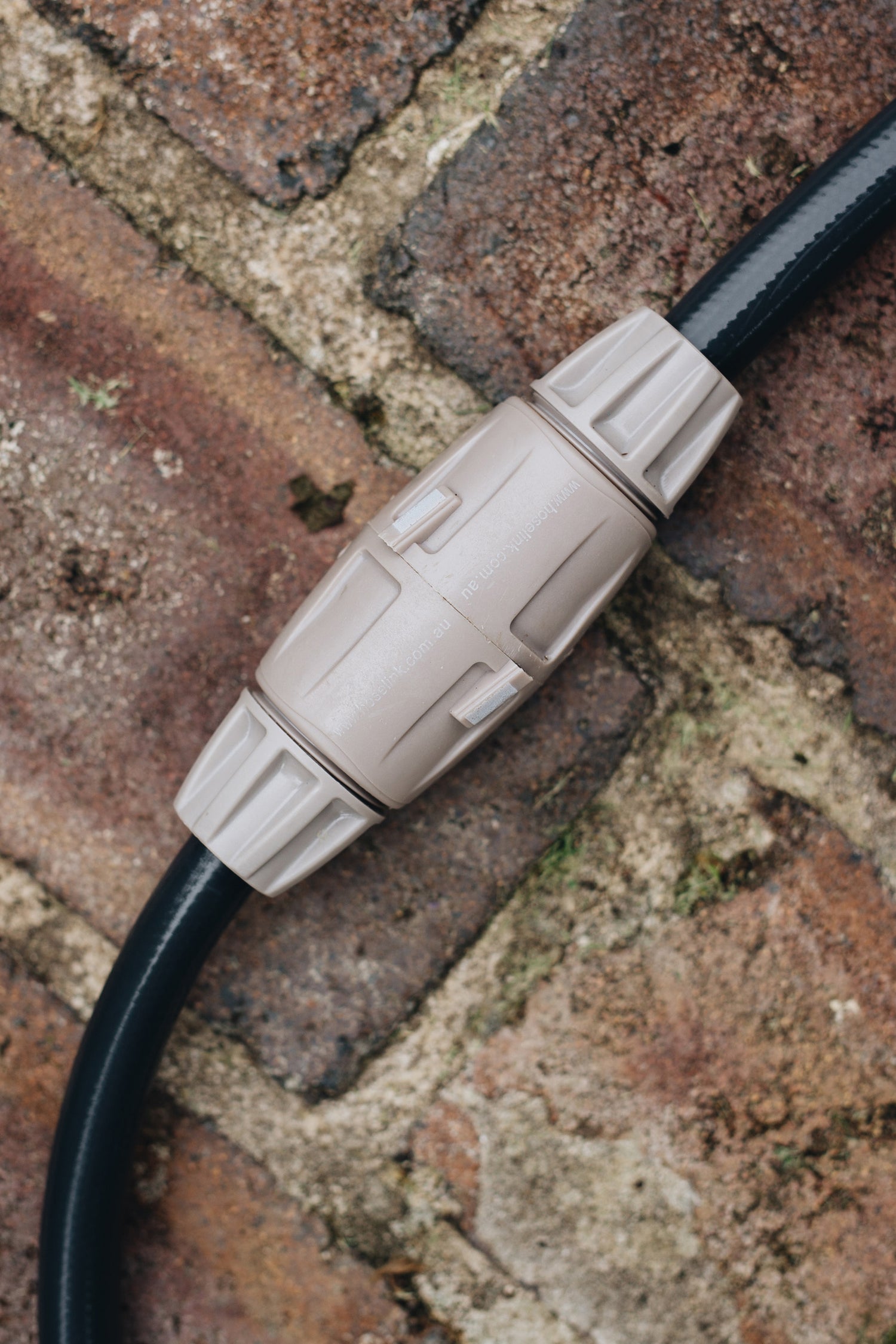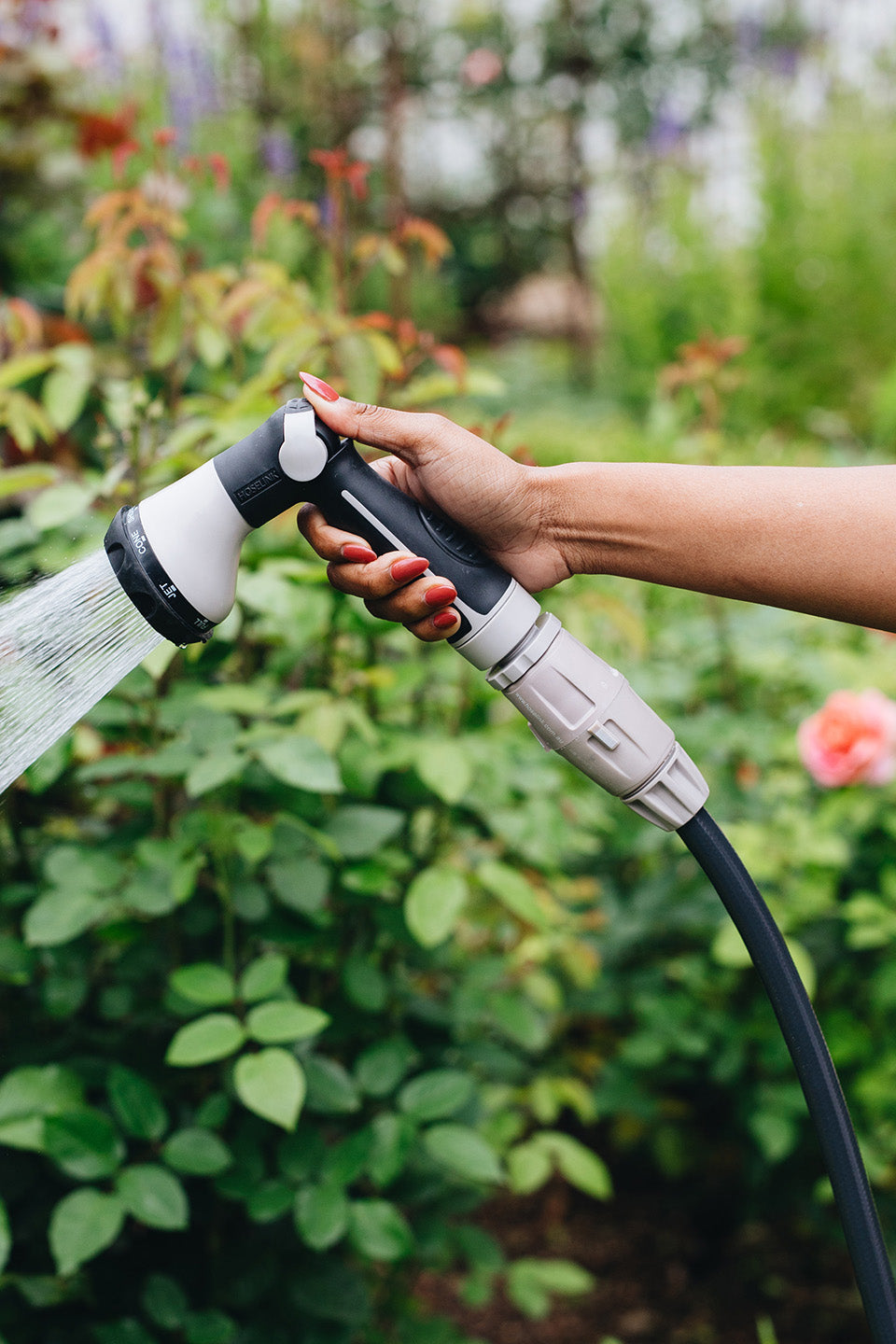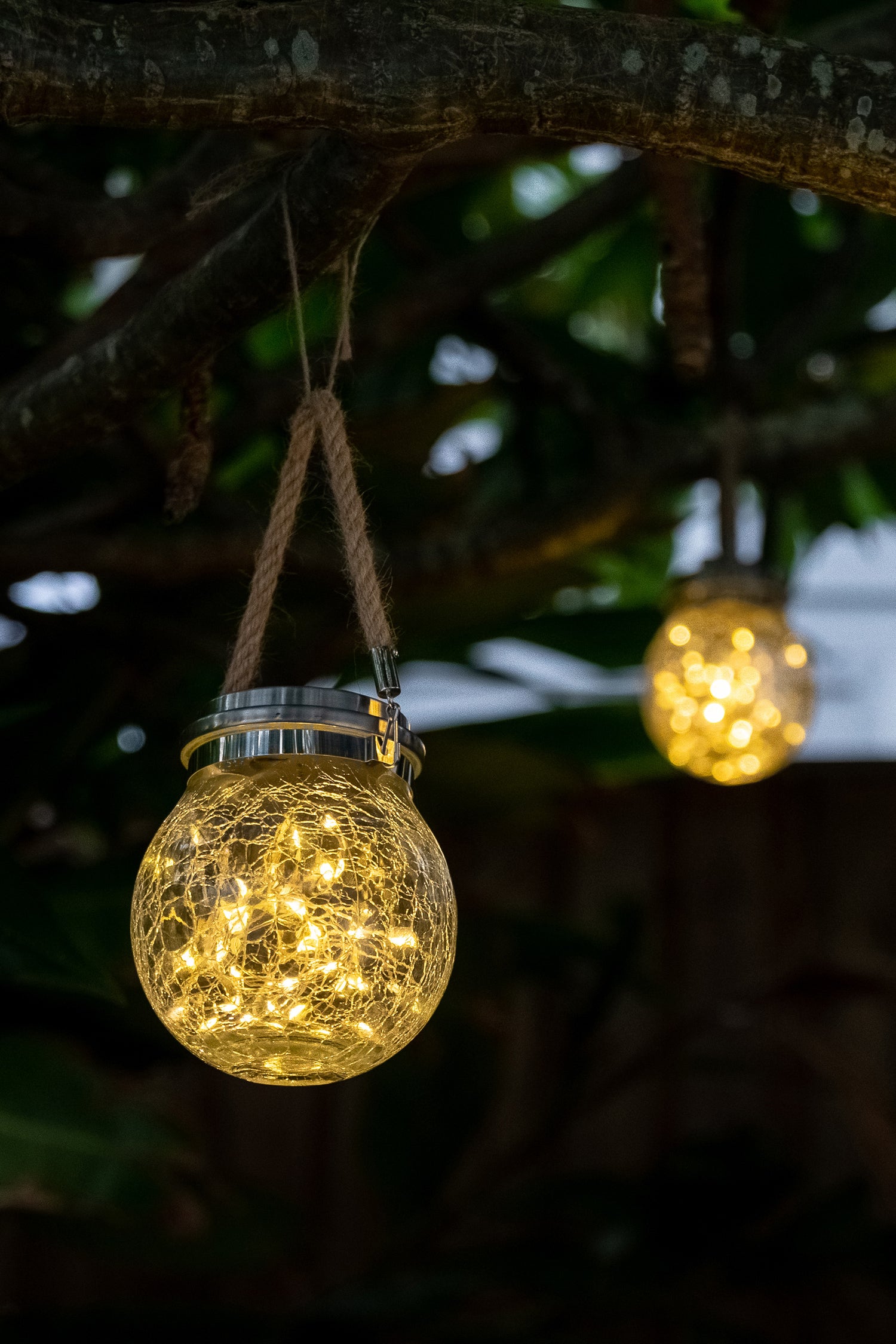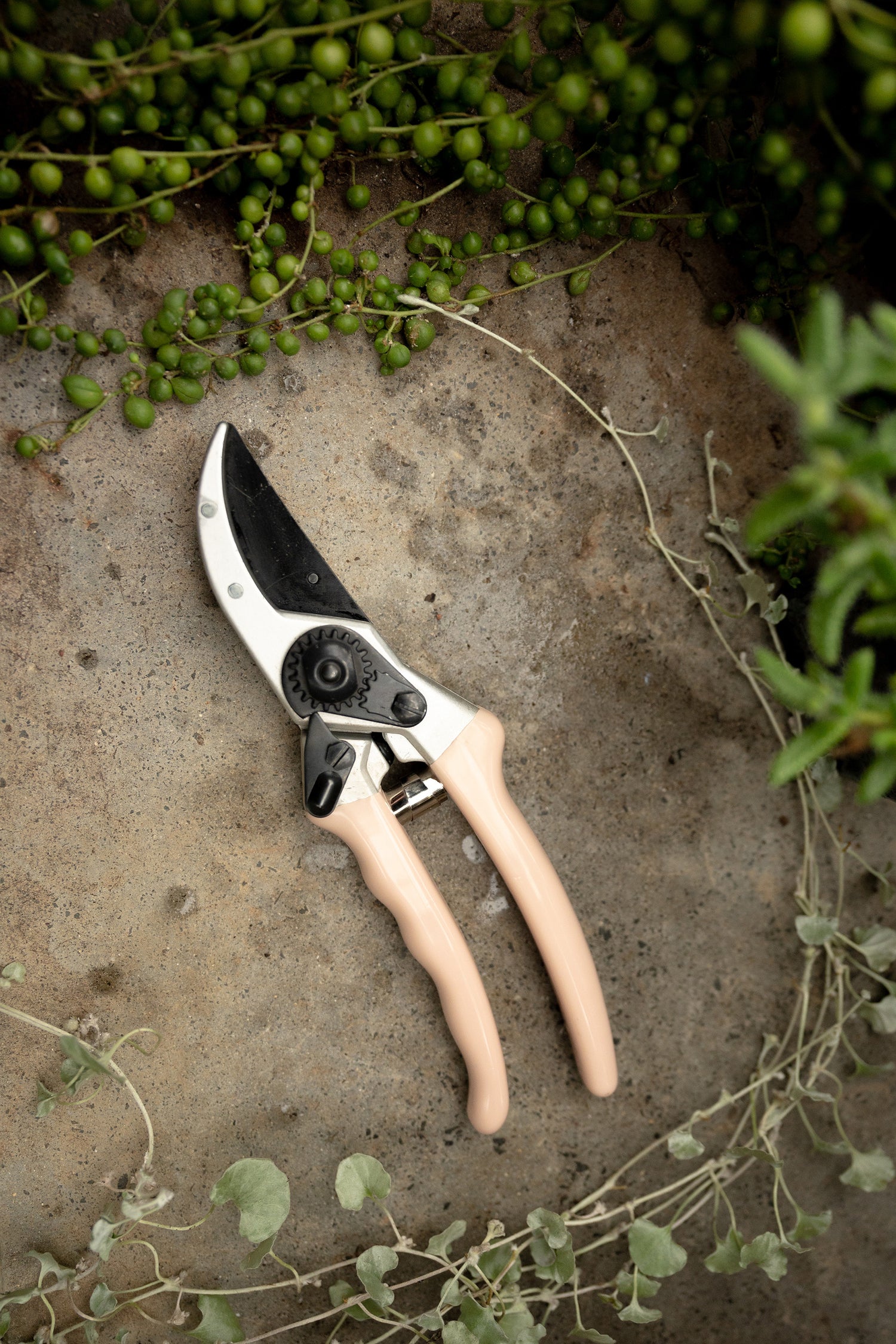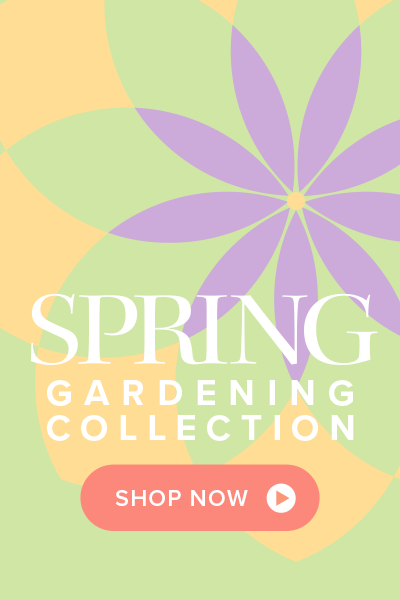If you're anything like us, you've seen the stunning vertical gardens and hanging plants all over your social media feed! If you've ever considered putting some of these gardening and landscape design ideas into practice, check out the blog for everything you need to know before you get started.
What is a vertical garden?
Exactly what it sounds like, a vertical garden is a garden that grows upwards or downwards – as opposed to using traditional horizontal beds. This smart use of space makes them especially popular in urban apartments and city units, where outdoor areas are limited and every square inch matters. Even without any outdoor space at all, the flexible, often modular design means they can thrive just about anywhere – indoors included.
Contrary to popular opinion, a vertical garden is more than just a climbing plant or a few vines on a trellis. It’s an entire structured system built into a solid framework – for example, attached to a wall, a fence, or a freestanding structure – that’s designed to support a variety of plants in a compact, upright format. Vertical gardens are usually soilless, instead using hydroponic or felt-pocket systems (more on these later) to support healthy root growth while reducing mess and maintenance.
On top of their space-saving benefits, vertical gardens provide the perfect opportunity to get creative. You can mix herbs with ornamental foliage, layer different textures and colours, or even create living art installations that change with the seasons. Whether you're looking to add gorgeous green ecology to a bare wall outside, soften a hard-edged balcony, or bring nature indoors, a vertical garden is a beautiful, practical, and sustainable way to do it. So let’s get into how.
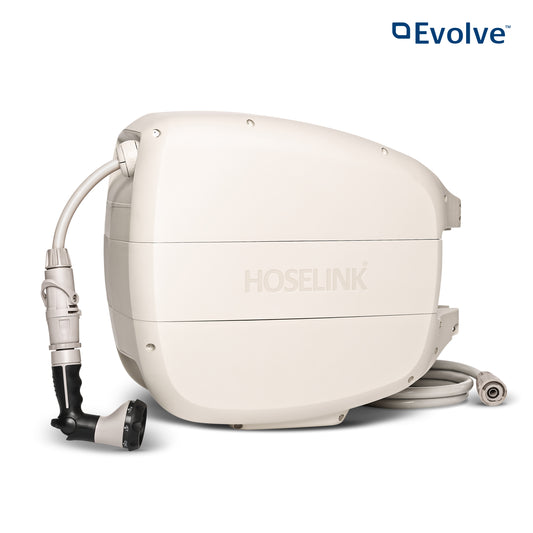
Evolve™ Retractable Hose Reel | Beige
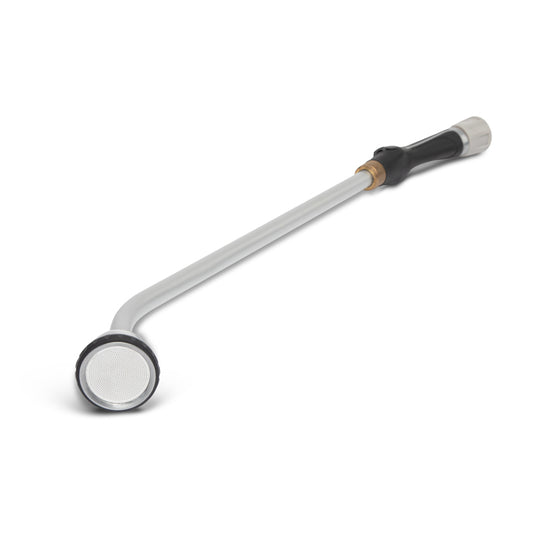
Long-reach Shower Spray Wand

Types of Vertical Gardens
Let’s start by taking a look at some of the most popular types of vertical gardens:
-
The Green Wall. Also known as “a living wall”, a green wall is a self-sufficient vertical garden structure that can be mounted to indoor or outdoor walls. Plants root directly into the framework and are nourished through a built-in drip irrigation system, rather than soil. Your typical green wall usually consists of a frame, a waterproof panel, an irrigation system and plants – and while it can be an expensive option, the result is a visually dramatic statement piece that requires little to no maintenance.
-
The Pallet Planter. This simple, space-saving vertical solution gives an old pallet a new lease on life. Either flip the pallet on its side and turn the slats into shelving, or attach smaller pots to the outside for a rustic, homemade look.
-
The Gutter Garden. Upcycle old gutter systems by turning them into sleek, space-saving planters that can be mounted on a fence or wall. For maximum visual impact, arrange the gutter sections in evenly spaced horizontal rows. Or, if you’re feeling extra creative (and extra ambitious) try a hanging gutter garden instead, by suspending the planters with steel cables for a unique, floating effect that doesn’t need a solid backing. Whichever option you go for, don’t forget to drill a few drainage holes to let excess water escape.
-
Hanging Pots. A hanging clay pot vertical garden works especially well for balconies, combining rustic charm with space-saving practicality. Use a threaded rod and a series of flanges (flat metal rings used in DIY projects to attach components together) to evenly space and support each pot, then add your favourite plants for a simple, stylish display.
Now that you have a clearer picture of what a vertical garden is, let’s dig into the actual gardening part – from the practical considerations of growing your favourite foliage on a tilt, to clever tricks to enhance the aesthetic appearance of your balcony, backyard or garden.

Selecting a Structure
When it comes to selecting the structure of your vertical garden, there are many options to choose from (including some ultra-creative ones we probably haven’t even thought of!). Here are some of the most popular choices, complete with pros and cons you might want to consider before taking the plunge.
-
A Wall of Your Home. One of the most accessible and commonly used foundations for a vertical garden is an exterior or interior wall of your home. Most homes have at least one wall that can be repurposed, and the ready-made structure means you’re instantly saving on excavation and major construction work. Plus, most walls are already strong enough to support the weight of a vertical garden setup. However, there are a few things to watch out for.
Mounting a garden directly to a wall means drilling holes, which can affect the appearance of your home and may pose a risk of moisture seepage over time. To prevent water damage, it’s essential to properly seal any drilled holes with a waterproof filler like silicone or putty.
If you’re building your vertical garden against a wooden surface (like a shed wall or timber cladding) it’s a good idea to add a layer of thick waterproof sheeting first. This extra barrier helps to protect the wood from water damage and prolongs the life of both your garden and the structure behind it.
Top tip: To reduce the number of visible holes and make installation cleaner, consider building the frame on the ground first, then mounting it to the wall using a minimal number of rivets or anchors. This means that any mistakes are made on the frame instead of the wall, and gives you more flexibility to change your mind regarding the final design as you go.
-
A Fence: A pre-existing fence can be an excellent, budget-friendly support structure for a vertical garden. It’s versatile enough to hold most types of pots and planters, and it makes great use of an empty space you might otherwise overlook. Just remember to check how much sunlight each section of the fence gets beforehand, and position your plants accordingly to meet their individual needs.
If you’re using clay or ceramic pots, you might want to think about lining them with vinyl or composite materials to retain the essential nutrients your plants need and boost the durability.
If you're not using clay or ceramic pots (which are naturally long-lasting) you may need to take a few extra steps to protect them. For example, metal pots can be coated or covered to prevent rust, especially in outdoor settings. Or, if you prefer wooden pots, you can opt for moisture-resistant woods like cedar, redwood, or exotic hardwoods, which are more resilient and better suited to long-term outdoor use.
-
A Bespoke, Free-standing Frame: There’s no shying away from the fact that a custom-built, free-standing frame will require a bit more investment upfront – both in terms of cost and labour – but many people consider it worth the expense because of the flexibility and design freedom it affords.
One of the key benefits is that you can tailor the frame to the exact size, shape, and style you want, and place it wherever it will receive optimal sunlight and create the most visual impact in your backyard. With a little extra effort you can move it around to refresh your garden’s look, or even take it with you if you move house later down the line.
As with fence-based structures, your choice of material here matters. Many experienced vertical gardeners tend to opt for lightweight, durable materials such as aluminium or PVC piping, which are easy to work with and weather-resistant (remember, wood can rot over time, quickly undoing all your hard work). Whatever you decide to go with, just make sure to apply proper moisture protection to keep your frame sturdy and your garden thriving for years to come.

Watering
Worried about watering your vertical garden or hanging plants? It’s easier than you think, especially with Hoselink’s handy range of watering solutions.
-
Garden Hoses: While hoses are excellent for watering lawns and shrubs, caring for your vertical garden often calls for a gentler, more precise touch. If you’d still prefer to use a hose, consider adding accessories like adjustable sprayers, watering wands for reaching higher spots, or root waterers to ensure your plants get the TLC they deserve. Alternatively, you can attach soaker hoses or sprinklers.
-
Soaker Hoses: With thousands of tiny holes, soaker hoses are designed to delicately water rows of plants in the ground – but they can also be draped across elevated pots with great results. They’re easy to use, highly effective, and ultra-time-saving. Check out the Hoselink Soaker Hoses by clicking here.
-
Sprinklers: Already one of Australia’s favourite ways to water, sprinkler systems are great for vertical gardens because of the natural height they can achieve. Simply position the sprinkler, adjust the water pressure, and then sit back and watch the show – your work here is done. You can explore Hoselink’s range of Sprinklers here.
-
An Advanced Irrigation System: The perfect solution for permanent and semi-professional structures, these irrigation systems typically use piping that connects either end to an existing tap or a separate water supply. A common setup involves a large main pipe feeding smaller pipes that distribute water to different parts of the structure, much like the systems used in commercial nurseries. That said, flanges, couplings, and adapters can be used to build a bespoke system that suits your garden’s unique needs.
-
Hydroponic Systems: Instead of relying on soil to hold nutrients, hydroponic systems use alternative growing mediums like coco coir, clay pellets, rock wool, or perlite to support the plant. A nutrient-rich water solution is used to deliver everything the plant needs directly to its roots, which allows for faster growth, uses less water than soil gardening, and keeps the structure clean and lightweight (perfect for vertical gardens with a light PVC or aluminium framework).
-
Felt-pocket Systems. These are specially designed pockets made from felt or other porous materials that hold the plants and their roots while retaining moisture and nutrients. The felt acts like a sponge, slowly releasing water and nutrients to the roots as needed. Felt-pocket systems are easy to install and maintain, and the pockets can be arranged in modular panels, making them ideal for creating lush, living walls.
The Effortless Appeal of Hanging Plants
If you love the idea of vertical gardening but you’re short on outdoor space or time, don’t worry, there’s no need to miss out on creating your own dynamic display. There are plenty of hanging plant options that can bring the beauty (and benefits) of vertical gardening into your indoor space with minimum effort. In fact, with so many resilient, low maintenance varieties to choose from, hanging plants can be a far more practical, realistic and rewarding option for many.
To help you explore your options, we’ve created a simple guide for choosing, caring for, and styling your own indoor hanging plants…
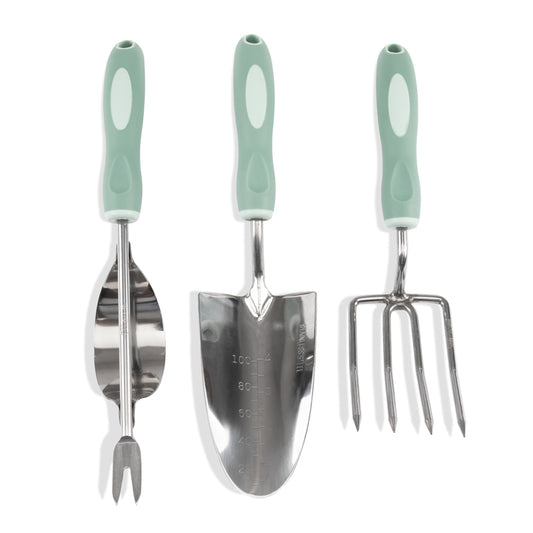
Garden Fork, Trowel and Weeder Set
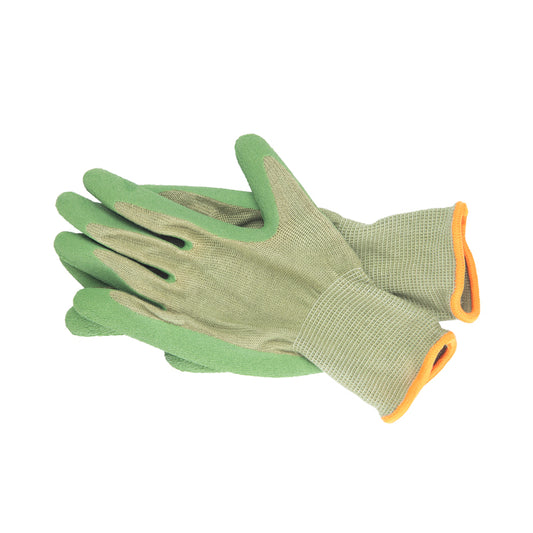
Lightweight Bamboo Garden Gloves
Plant choices
1. Types of Hanging Plants
Devil’s Ivy
(Epipremnum aureum)
This creeper is right at home in a hanging pot or basket, with plenty of room for its vine tendrils to spread out in all directions. Its vibrant leaves are glossy and heart-shaped, making it an attractive addition to any plain or empty space. If you’re tight on space and want your plant to hold a particular shape, just trim back the vines or use wall hooks to arrange them along the wall. Devil’s Ivy is notoriously hardy, thriving indoors with just a little light or water. So if you’re looking for a low-maintenance plant that will forgive you if you forget to water it, then Devil’s Ivy is the one for you.
Monstera
(Monstera Deliciosa)
Transform your living room into a tropical retreat with a Monstera. Often called the Swiss Cheese Plant in ode to its huge, holey leaves, Monstera is a natural climber, and will gradually stretch upward with the support of a trellis or wooden totem, adding height and drama to your space.
It fares best in bright, indirect light and should be watered when the top inch of soil feels dry. During its active growing seasons (Spring and Summer) you can feed your Monstera with a balanced fertiliser once a month to keep it happy, healthy and thriving. It’s typically a dense, bushy plant, so if it starts to get a little out of control, simply prune back any vining branches as needed.
Zanzibar Gem
(Zamioculcas zamiifolia)
Native to Africa, the Zanzibar Gem (also known as the ZZ Plant) has deep green, glossy leaves and is highly drought-resistant, thanks to its ability to store water in its thick, potato-like tubers. This means it not only looks the part, but it’s often hailed as “almost indestructible” – making it perfect for anyone who regularly leaves their plants to their own devices.
In fact, caring for a Zanzibar Gem is refreshingly simple on the whole. It thrives on neglect and prefers infrequent watering – once a month is usually enough. It’s happiest in a bright or lightly-shaded area, however, it will tolerate low-light conditions or a shady spot (bear in mind it will just take longer to grow). It has only two vices: keep it out of direct sunlight, which can scorch the leaves, and avoid overwatering or letting it sit in water, as this can cause root rot.
Top tips: To keep your ZZ Plant thriving, consider adding a slow-release fertiliser in Spring. And if you notice the roots starting to bulge or outgrow the pot, it’s time to re-pot.
String of Pearls
(Senecio rowleyanus)
Looking for a plant that stands out from the crowd? With its delicate, bead-like green leaves, the String of Pearls is anything but your average succulent. When artfully arranged in a decorative pot, the trailing stems will cascade gracefully over the edges, resembling strands of beaded necklaces spilling out – hence the name!
The String of Pearls thrives in bright, direct light and, despite its dainty appearance, is impressively drought-tolerant (a light watering once a week is sufficient). Like most succulents, it loves the occasional pruning. Snip away any dead stems or shrivelled pearls to encourage new growth and fresh shoots.
The String of Pearls prefers a mild room temperature around 22°C, so make sure to keep it away from heating vents or air conditioning units.
Staghorn
The Staghorn Fern is part of the air plant family, meaning it doesn’t need soil to grow. In nature, it anchors itself to trees, but in your home it will propagate on a backing board like a canvas or picture frame, and can be displayed like a piece of living art.
Staghorn Ferns vary greatly in size and thrive in humid environments. The good news is they’re relatively low maintenance – they prefer light shade with occasional patches of sunlight, and need proper drainage, but that’s really it. As with other indoor plants, it’s good to keep the soil moist but avoid overwatering, and prevent it from drying out by hanging it away from dry, hot breezes from open windows or doorways.
If any fronds begin to yellow or die back, you can trim the discolored parts for a more attractive appearance, but otherwise there’s no need to remove the whole frond.
Kokedama
Rooted in the traditional Japanese art of planting, the Kokedama is a definite talking piece. It involves a technique where the soil is shaped into a sphere, wrapped in moss, and secured with natural twine to form an ethereal floating globe. The finished result adds an earthy, organic touch to any space, and since there’s no pot involved, you don’t have to worry about it tipping over or falling.
Not only does planting this way make the sphere appear as though it’s magically suspended mid-air, but it also creates a mini, self-sustaining ecosystem. All your Kokedama needs is the occasional watering every now and then. Simply submerge the moss ball in a bowl, bucket or sink of water for about a minute, then let it drain before rehanging. Water once a week in the warmer months or once a month in winter, and avoid hanging in direct sunlight to stop it from drying out. If you’re unsure whether your plant is receiving enough water, give it a quick spray with a mister bottle to keep it moist and hydrated.
Spider Plant
(Chlorophytum comosum)
An indoor favourite for a reason, spider plants have stunning arched leaves and produce "baby" plantlets that dangle down like tumbling green waterfalls. They’re incredibly adaptable and easy to care for (just water moderately and allow the soil to dry between waterings) and thrive in bright, indirect light but will also exist happily in lower light conditions. They’re known for their air-purifying qualities, making them a great addition to any place unwanted smells might linger, like kitchens or bathrooms.
Burro’s Tail
(Sedum morganianum)
This trailing succulent earns its name from its cascading stems and blue-green leaves said to resemble a donkey’s (or a burro’s) tail. It loves bright light (perfect for those sunny spots in your home) and doesn’t need much water – in fact, it should only be watered when the soil is completely dry.
Philodendron Brasil
(Philodendron hederaceum ‘Brasil’)
This fast-growing vine has heart-shaped leaves and striking variegation (when a plant’s leaves or stems have different colours or patterns) in yellow and green. As resourceful as they come, it only needs a moderate watering when the top inch of soil dries out. Too easy.
Hoya
(Wax Plant)
Known for its thick, waxy leaves, trailing vines and clusters of fragrant, star-shaped flowers, the Hoya is a hanging basket’s best friend, and adds a lush, exotic feel to every indoor space. It prefers bright, indirect light and well-drained soil – so make sure you give it a chance to dry out between waterings.
2. Hanging Your Plant
The charm of hanging plants lies in their versatility. They can be arranged in countless ways – strung from different heights in hanging crochet baskets, in clusters, or as a single plant cascading down from a high shelf. It doesn’t matter which room you put them in – kitchen, bathroom, bedroom or main living area – they’ll instantly breathe life into any space. (Literally, if you choose a plant with air-purifying qualities.)
For the best results, hang your plants on sturdy hooks securely drilled into a solid ceiling or wall. Or, if that’s not an option, get creative by using natural features in your home like cabinet knobs, ledges, or other unique fixtures.
The type of indoor plant you choose will guide the positioning – remember, some plants prefer a shady spot over direct sunlight, and it’s best to keep them away from drafty doors or windows to avoid them drying out. The same is true for containers – the type of plant should dictate whether you choose a classic pot, a glass terrarium, a vase, a woven macramé hanger, or even washable paper planters. For example, Staghorn Ferns thrive when mounted on a tree stump or backboard after hanging, while the Japanese art form Kokedama doesn’t need a pot at all, as it creates its own mini ecosystem.

3. Caring for Your Plant
Many indoor plants come from subtropical climates, which means they’re best suited to warm environments and require minimal watering. Most are relatively low-maintenance, but as mentioned earlier, it’s crucial to provide the right amount of light and avoid overwatering, since excess moisture can lead to root rot.
To check if your plant needs watering, simply insert your pinky finger into the soil – if your nail feels slightly damp when you pull it out, the plant has enough moisture. During cooler winter months and periods of low sunlight, reduce your watering routine by half. Typically, watering hanging indoor plants once a week in Summer and once a month in winter is ideal – although you can remind yourself what exactly your individual plant needs to thrive above.
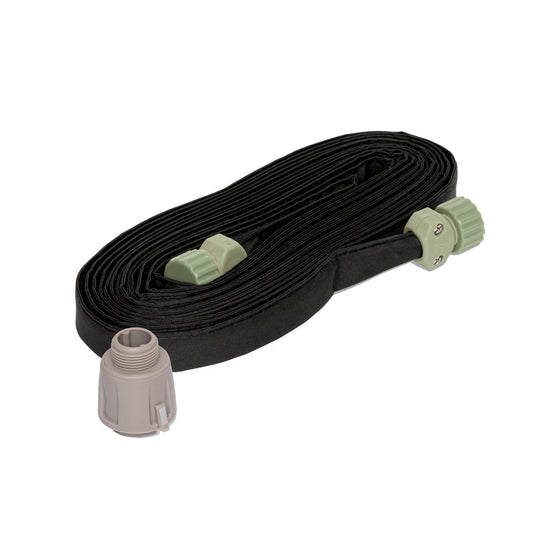
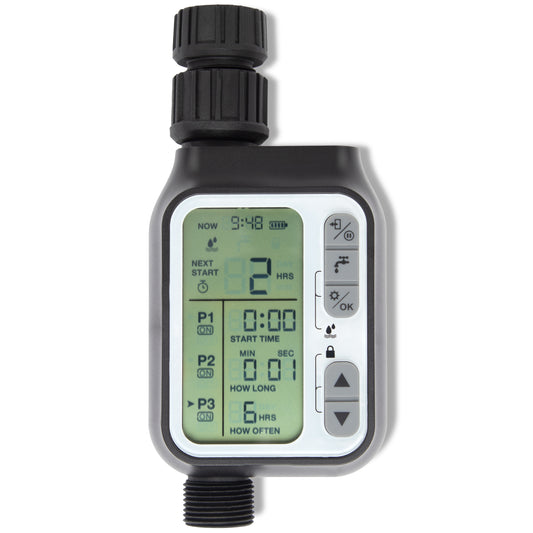
Automatic Tap Timer with Rain Sensor
Understanding your priorities for your vertical garden or hanging plant project makes choosing the right compositions and structures much easier. For instance, if you have an unsightly wall, a sturdy frame is a perfect solution to hide it. If privacy is your goal, a trellis or structure with climbing and creeping plants can create a natural screen and your own private utopia. If you rent or want the flexibility to move plants around, shelving or hooks for pots offer easy mobility and the opportunity to change your mind. If growing your own fresh vegetables is your passion, selecting your preferred crops in advance will guide the best growing methods, because different vegetables have different needs (like space, soil depth, light, and watering).
Just ask the right questions from the start, and the best path to your very own vertical garden or hanging plant oasis will reveal itself. Good luck – and if your creations make it onto your socials, be sure to tag us @hoselinkaustralia. We’re always on the lookout for fresh inspiration!

